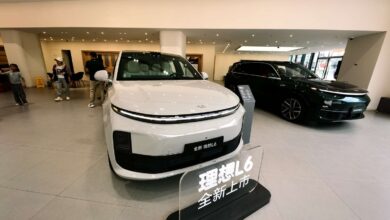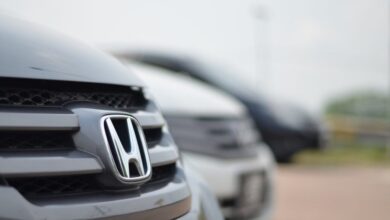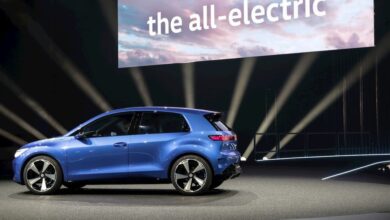Here’s Why It Looks Like People Are Sticking Harry Potter Hats Onto Their Electric Cars

It’s Monday and I need to publish a short blog, so I figure I may as well tell you about something I discovered on a BMW i3 forum: The Harry Potter Sorting Hat. People are installing it onto their EVs, and I’d never seen it before. So let’s talk about it.
Obviously, it’s not a literal Harry Potter Sorting Hat I’m talking about. For one, I’m not sure what the Gryffindor house would need a Hyundai Ioniq 5 for; it seems to me that brooms and Hippogriffs are more efficient ways to get around. Two, I’m not sure what Hogwarts’s EV infrastructure looks like. And three — and most importantly — Sorting Hats are fictional.
![]()
Still, these EV Charge Port Covers look a lot like the Sorting Hat, and more importantly, I’m using the “sorting hat” analogy because my colleagues told me to call it a condom, and I didn’t want to do that since my mom is reading. I preferred “sock” or “glove,” but they thought that was boring. And so here we are, meeting in the middle, with Harry Potter Sorting Hat.
With that long-winded intro behind us, let’s talk about EV charging in the rain, because this is something many people worried about in the early EV days, and it’s still a common Google serach — “Is charging my electric car in the rain safe?” The answer is yes. Mazda, who doesn’t even make any EVs for the US market (but it does sell PHEVs), has an entire webpage devoted solely to answering this question:
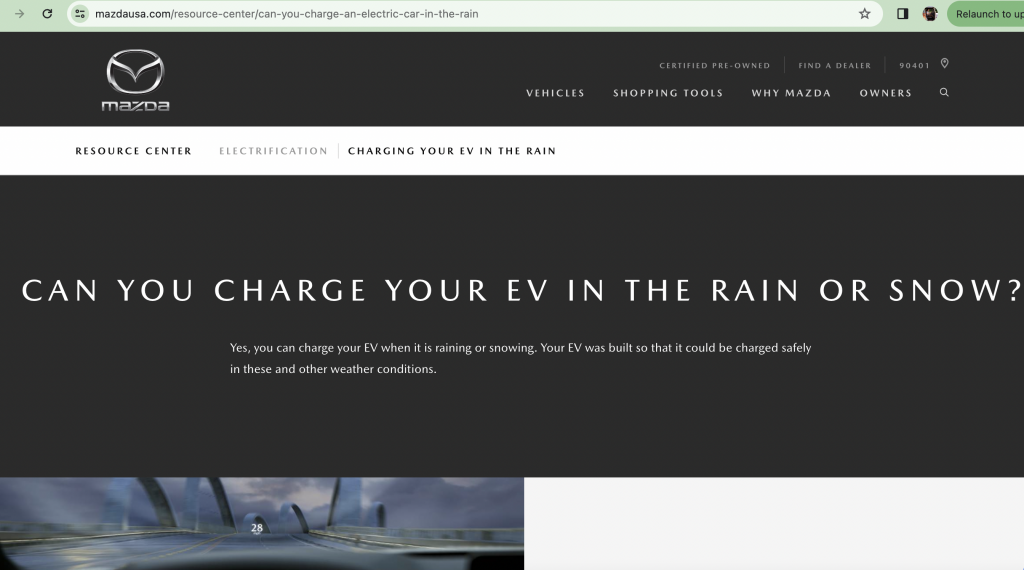
Here’s what the company has to say:
Yes, it is safe to charge an electric car in the rain. Electric vehicle charging equipment is designed to be weatherproof and meet strict battery charging safety standards as outlined by the Code of Federal Regulations and the National Electrical Code so rain or snow should not pose a risk during charging.
Mazda dives a bit deeper, writing;
The NEC, in particular, requires that EV chargers are properly installed and operated safely, including considerations for weather and rain. NEC standards may include requirements for weatherproof enclosures, waterproof connectors, and proper grounding to protect against electrical hazards caused by water exposure.
Compliance with NEC regulations helps to assure EV drivers that they’ll be protected when powering up their vehicles, even when outdoor conditions aren’t ideal.
CHARGING SAFEGUARDS
EV charging stations are engineered with safety in mind, with features like weatherproof enclosures and ground fault circuit interrupters (GFCIs), the latter of which immediately cut power when water makes close contact with live electricity.
These charging elements are also designed to resist dirt, water, dust, and other environmental factors that can affect an EV’s electrical current and ability to sustain power.
It is recommended that outdoor EV chargers have an ingress protection, or IP rating, such as IP65 or IP66, which means that charging equipment is designed to operate safely in the rain and wet areas. EV charging equipment is also made from high-quality materials that withstand exposure to moisture and adverse weather conditions and are thoroughly tested for durability.
§ 571.305 Standard No. 305; Electric-powered vehicles: electrolyte spillage and electrical shock protection.
The short of it is that the chargers themselves are designed to be water resistant; they will not start sending current to the battery until a “handshake” has taken place indicating that the charger has been inserted into the port; and even if some water gets into it all, the GFCI’s should take care of business. Here’s some more on GFCIs from OSHA:
A ground-fault occurs when there is a break in the low-resistance grounding path from a tool or electrical system. The electrical current may then take an alternative path to the ground through the user, resulting in serious injuries or death. The ground-fault circuit interrupter, or GFCI, is a fast-acting circuit breaker designed to shut off electric power in the event of a ground-fault within as little as 1/40 of a second. It works by comparing the amount of current going to and returning from equipment along the circuit conductors. When the amount going differs from the amount returning by approximately 5 milliamperes, the GFCI interrupts the current.
The GFCI is rated to trip quickly enough to prevent an electrical incident. If it is properly installed and maintained, this will happen as soon as the faulty tool is plugged in. If the grounding conductor is not intact or of low-impedance, the GFCI may not trip until a person provides a path. In this case, the person will receive a shock, but the GFCI should trip so quickly that the shock will not be harmful.
The GFCI will not protect you from line contact hazards (i.e. a person holding two “hot” wires, a hot and a neutral wire in each hand, or contacting an overhead power line). However, it protects against the most common form of electrical shock hazard, the ground-fault. It also protects against fires, overheating, and destruction of wire insulation.
Watch YouTuber “All EV by Steele Auto Group” put all of this to the test (We don’t recommend this):
So with all this safety built into EV charging, what’s with the weird Harry Potter hats? Well, the Amazon seller writes that the charge port cover “blocks rain, snow and ice, particularly preventing the charging port from getting jammed with snow and ice in winter, sparing you the pain of cleaning out in the morning.”
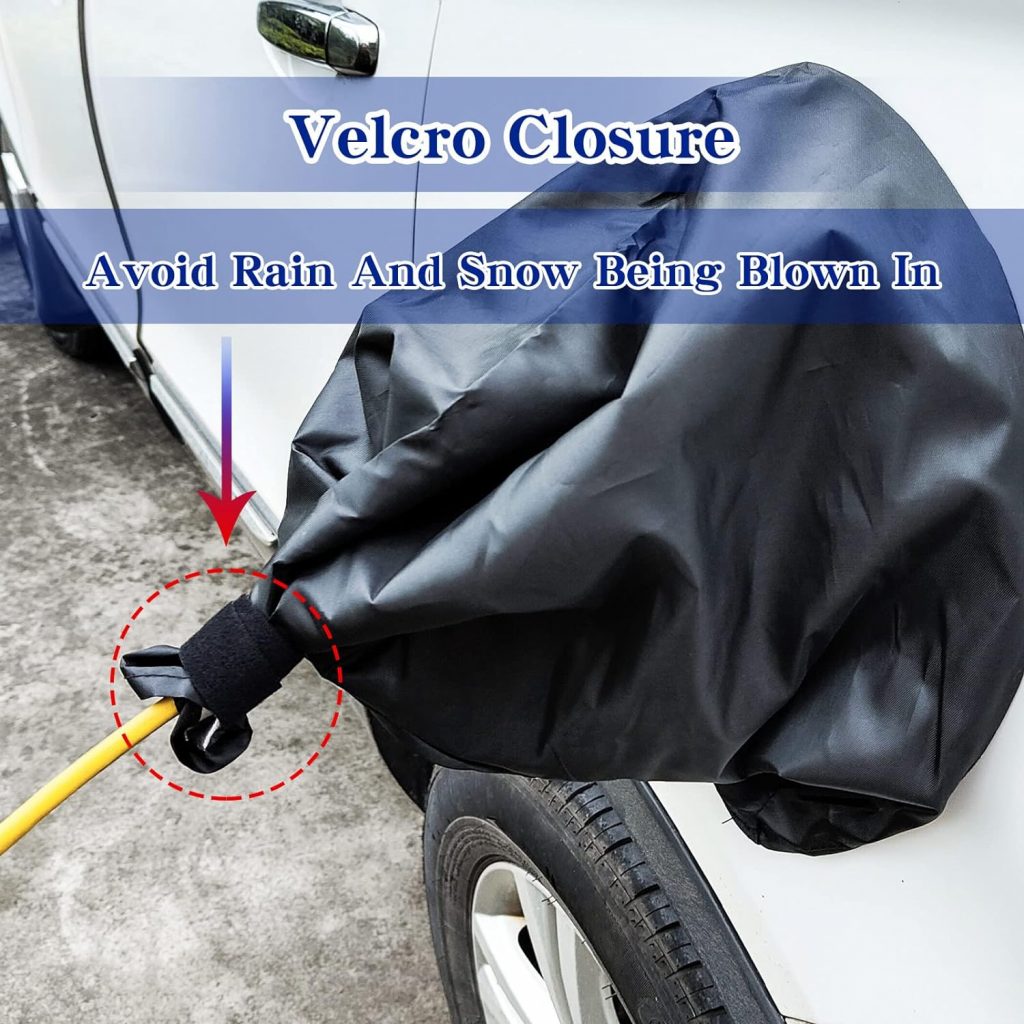
And indeed, the device seems to do this job nicely, per reviewers. Check out what “Alex Thimble” has to say:
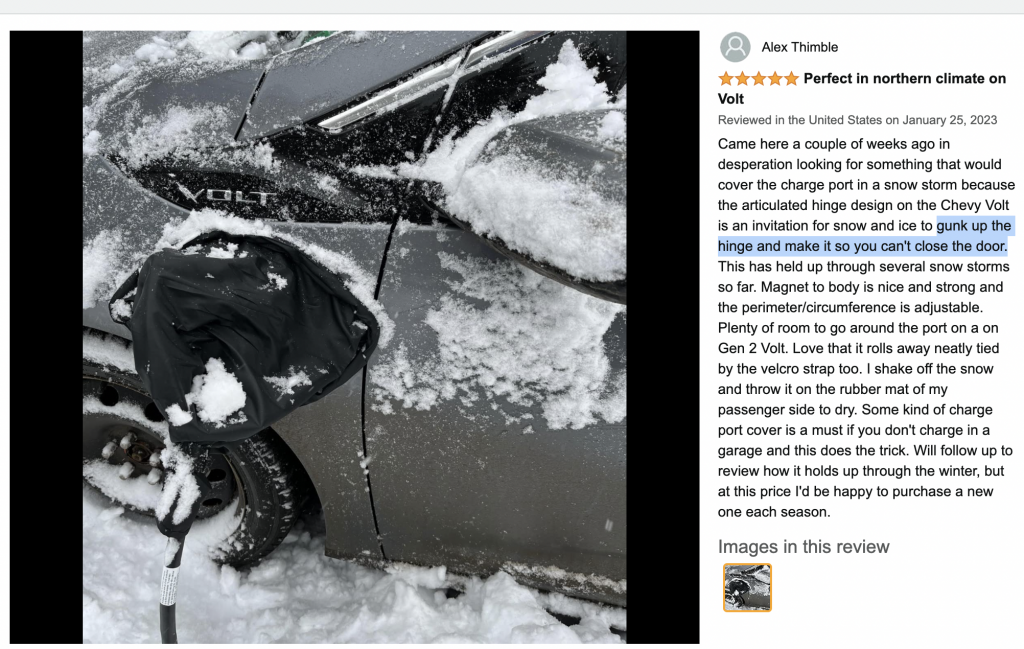
You’ll notice that the cover envelopes the entire door itself, so it’s not just the charger handle’s button that you no longer have to get unfrozen, but you don’t have to worry about the door jamming.

The device is pretty simple; it looks like some kind of conical waterproof synthetic fabric with the larger end having a magnet running its circumference. That magnet sticks to the body of the car, closing off the big end, while the smaller opening gets closed against the charging cord via some kind of velcro strap:
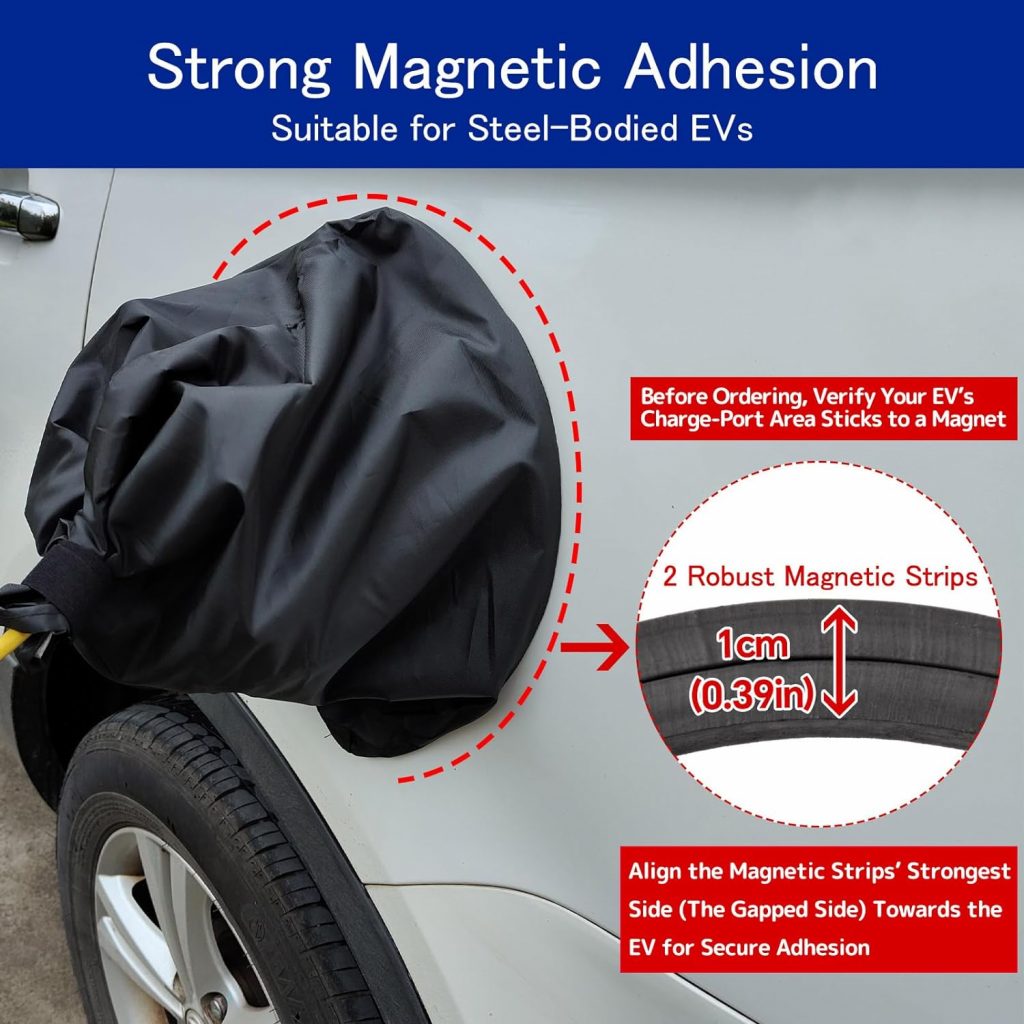
The downside to the flexible magnet is that this Sorting Hat will only work for vehicles that have steel body panels. So my BMW i3 and the Chevy Bolt EV won’t work, but the Tesla Model 3 and Bolt EUV and the Hyundai/Kia EVs should.
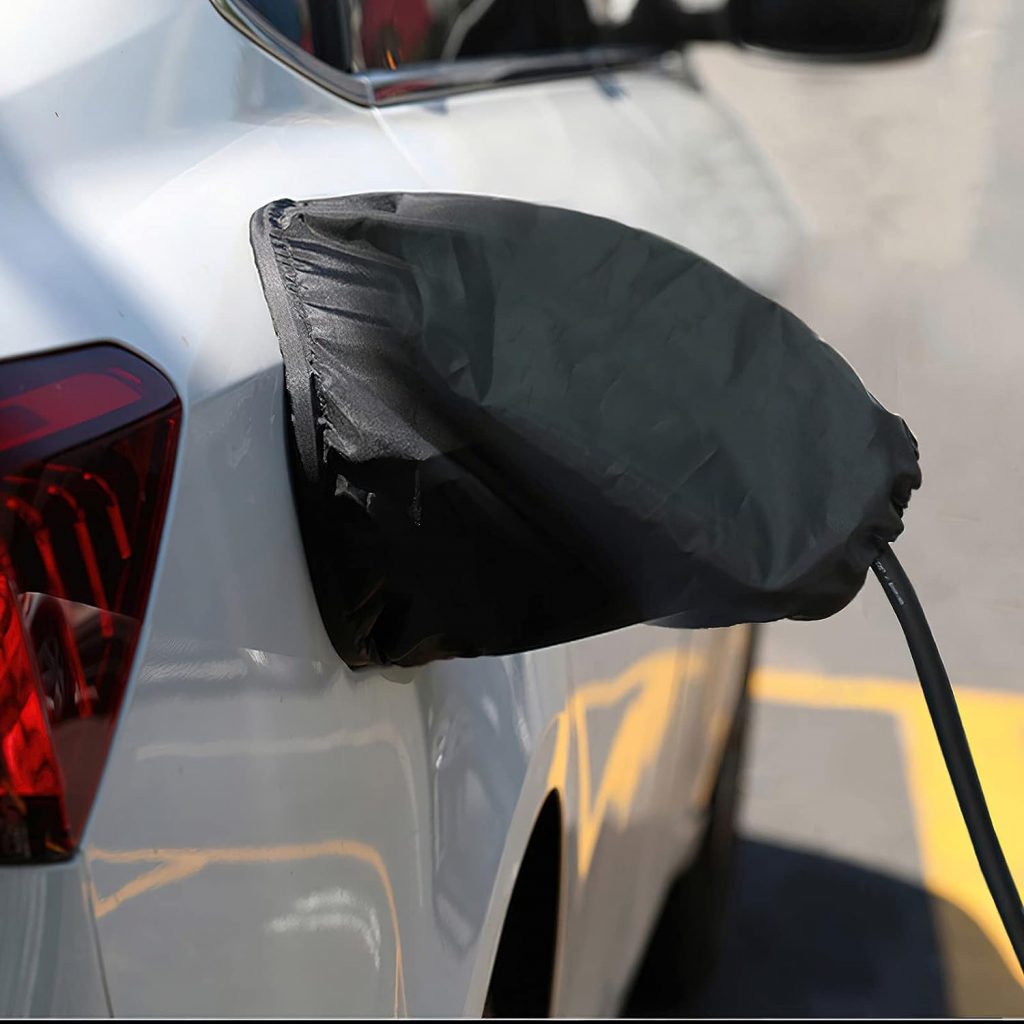
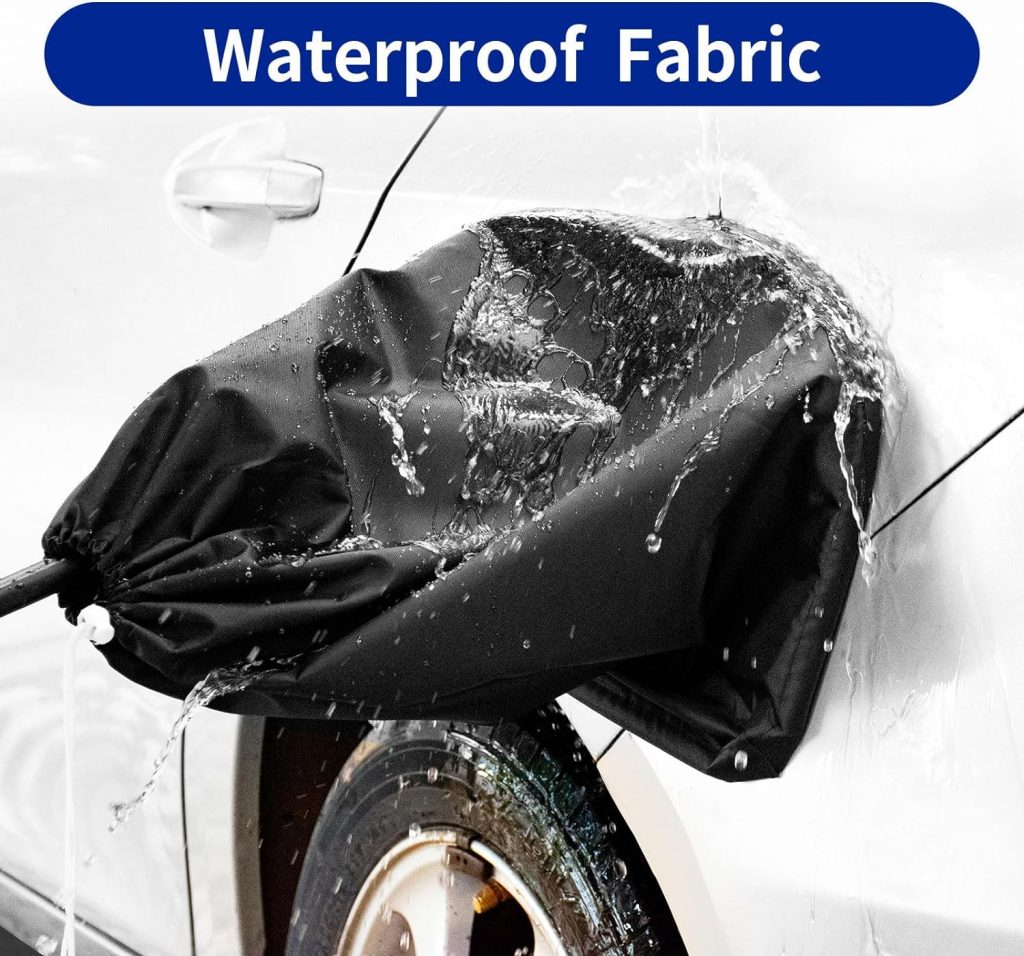
Here you can see a Tesla Model 3 owner happy with their Sorting Hat:
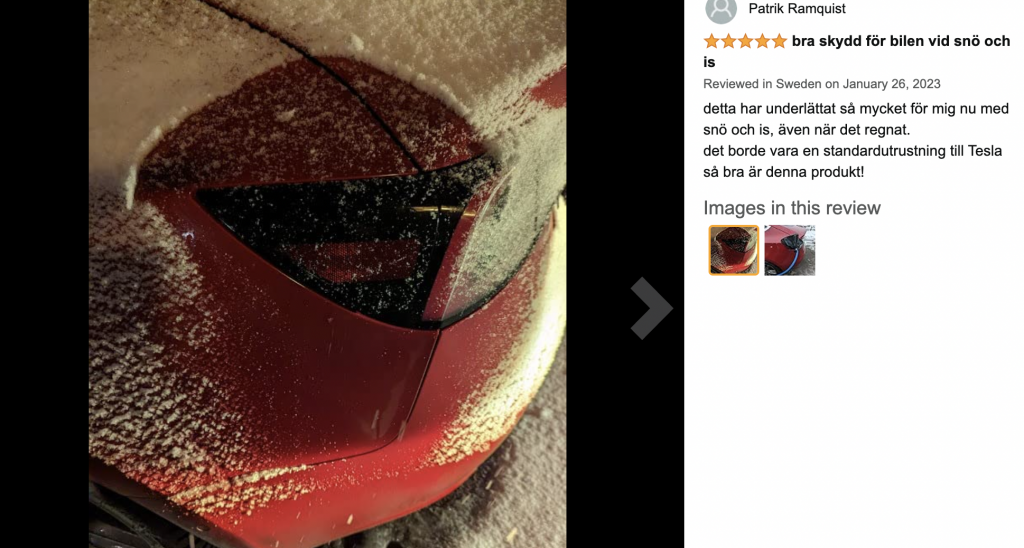
Here, allow me to use Google to translate that from Swedish:
This has made it so much easier for me now with snow and ice, even when it rained. it should be standard equipment for Tesla that’s how good this product is!
Anyway, I never really knew about these Charge Port covers, nor am I convinced that they’re really necessary in most places. But I guess if you get a lot of snow that could fill your charge port and make closing the door tricky — or if you live somewhere that sees ice-rain, which could make detaching the charging handle from your car hard — I could see the value. Though I’m curious how hard it is to pull this Sorting Hat off the car when it’s iced-on. And I’m curious about a review I read about scratches to the car. Hmm.
Either way, maybe I’ve been living under a rock, but I didn’t know these were a thing. And since you may not have, either, I figured I’d share it with you.
Body images: LZSTEC Store/Amazon; Topshot image: Warner Bros. Pictures
